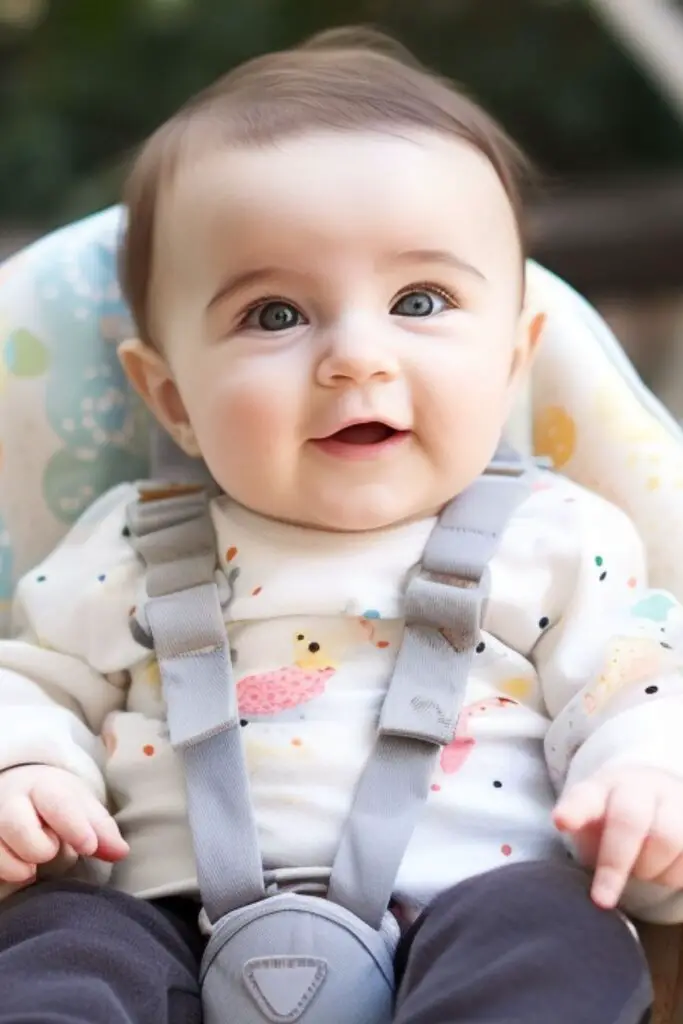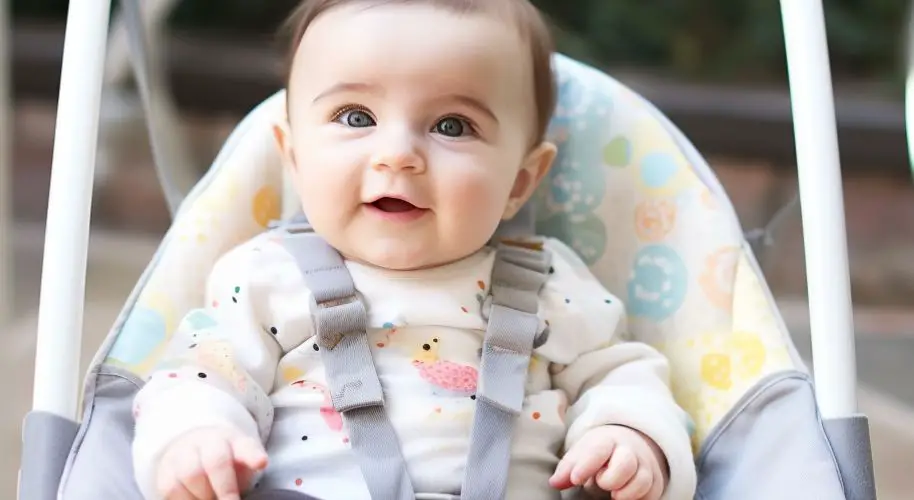Last Updated on June 5, 2025
Swinging a baby for long periods has been a traditional and cherished method of comforting an infant. The gentle, rhythmic motion often soothes a baby’s cries and lulls them into sleep.
The question arises—can these extended periods in the swing harm the baby’s development or health? This is a common concern among new parents as they strive to balance convenience with the best care for their little ones.
Understanding the effects of excessive swinging can help parents make informed decisions about their baby’s routine.

Are long periods in the swing bad for a baby?
Long periods in a swing can be detrimental to a baby’s health.it is recommended not to leave your baby in a swing for extended periods.
Experts suggest that about 15-minute chunks are fine, but longer durations can deprive your baby of essential growth and development opportunities.
The Sleep Foundation also warns against allowing babies to sleep in swings for long periods. They mention that keeping a baby in one area for an extended period can cause a flat spot on the head.
What is the recommended duration for a baby to stay in a swing?
The recommended duration for a baby to stay in a swing varies among experts. Most experts suggest limiting your baby’s time in a motorized swing to an hour or less daily.
Overuse of baby swings should be avoided, and time in the swing should be limited to one hour per day.
On the other hand, some experts recommend even shorter durations. Some experts suggest limiting swinging to 15 minutes at a time.
As quoted on Care.com, Dr. Trachtenberg advises that babies shouldn’t be in a swing for more than 30 minutes at a time.
Are baby swings considered unsafe for sleep, and why?
Baby swings are generally considered unsafe for sleep, and there are several reasons for this:
Risk of Asphyxia:
Baby swings often have an incline. The American Academy of Pediatrics (AAP) warns that babies sleeping on an incline can slide down, causing their chin to drop to their chest, potentially blocking their airways and leading to asphyxiation.
Increased Risk of SIDS:
The AAP also recommends that infants sleep flat on their backs in a crib, as sleeping on an incline has been linked with an increased risk of Sudden Infant Death Syndrome (SIDS).
Development of Flat Spots:
Extended time in a swing can lead to positional plagiocephaly or flat spots on a baby’s head. This is because the soft bones of a baby’s skull can become molded by pressure from the swing.
Inadequate Support:
Swings do not provide the firm surface that is recommended for infant sleep. Babies need a firm sleep surface to support their growing bodies properly.
Risk of Injury:
A baby is likely to fall out of the swing, especially if they’re not properly strapped in or manage to wriggle free. Also, swings can malfunction or topple over.
Interference with Development:
Spending too much time in a swing can limit a baby’s ability to develop motor skills from time spent on the floor, like rolling over and crawling.
You Might also Like These Resources!
- Impact of Prolonged Baby Swing Sleep on Spine Health
- Baby Swings and Development: Addressing Concerns
- Are Bouncy Swings Detrimental for Babies?
Can sleeping in swings negatively affect a baby’s spine health?

Sleeping in swings can indeed negatively affect a baby’s spine health. The National Center for Biotechnology Information stated that the positioning of infants in common baby devices could impact their spinal muscle activity.
The American Academy of Pediatrics advises against allowing babies to sleep in swings because it can increase the risk of Sudden Infant Death Syndrome (SIDS) and potentially harm a newborn’s developing spine.
Prolonged use of a rocking baby chair or bed can cause spinal issues. Improper sleeping positions in devices like hammocks can affect the shape of the baby’s spine.
FAQs
How can parents effectively break a baby’s habit of sleeping in a swing?
Breaking a baby’s habit of sleeping in a swing can be a gradual process that requires patience. Here are some strategies based on the sources mentioned:
Gradual Transition:
Start by reducing the time your baby spends in the swing while asleep. You could move them to their crib after falling asleep in the swing.
Adjust Swing Speed:
Gradually decrease the swing speed until it is not moving at all. This can help your baby adjust to the lack of motion when transitioning to a crib.
Use the Swing for Awake Time Only:
Begin using the swing only when your baby is awake and needs soothing, not for sleep.
Create a Sleep-Conducive Environment:
Make sure the baby’s room is quiet, dark, and cool. Using white noise can also help mimic the constant noise of the swing.
Establish a Bedtime Routine:
A consistent bedtime routine can signal your baby that it’s time to sleep. This routine might include a bath, a story, and a feeding.
Patience and Persistence:
Remember that breaking this habit will take time. Be patient with your baby (and yourself) as you navigate through this transition.
Wrapping up
It is important to be mindful of your baby’s time in their swing. Prolonged use can lead to physical development issues and potential dangers such as SIDS and asphyxiation. While swings can provide a great way for babies to relax and soothe themselves, it is best not to rely on them for long periods. Parents should know the recommended 15-minute to 1-hour duration for a baby to stay in a swing.
Swings should not be used as a substitute for tummy time. Babies need daily opportunities to practice tummy time, so encourage your baby to spend at least 30 minutes on their stomach every day when awake and supervised.
This can help strengthen muscles that support the head and neck, which is important for healthy physical development. It can also help prevent flat spots from forming on the back of the baby’s head.
By following the safety guidelines and recommended durations set forth by health professionals, you can ensure that your little one enjoys their swinging experience without risking potential harm.
You Might Also Like These Latest Content!
- What’s the Appropriate Age for Babies to Use Swings at the Park?
- Can You Pack a Baby Swing in Your Luggage?
- Ensuring the Safety of Vibrating Swings for Babies

Dr. Leah Alexander is a board-certified general pediatrician who has been in practice for over 20 years. She began working as a pediatrician at Elizabeth Pediatric Group of New Jersey in 2000. Since 2005, she has been working as an independently contracted pediatrician with Medical Doctors Associates at Pediatricare Associates of New Jersey. Read more
